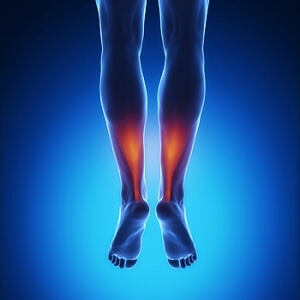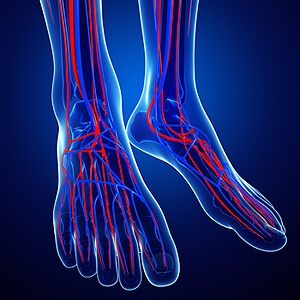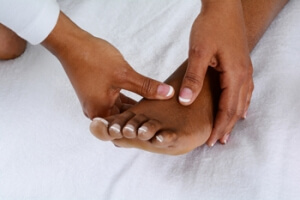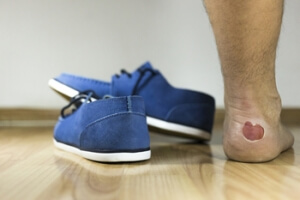Super User
Mandatory Education to Pursue Podiatry
 A podiatrist is defined as a doctor who is educated in diagnosing and treating foot and ankle conditions. Many podiatrists are also qualified to perform surgery. Mandatory schooling for a podiatrist consists of earning a bachelor's degree, followed by enrolling in podiatry school. This program will last four years, with a focus in the first two years centering on exams and classroom lectures. The latter part of the education is clinical, with opportunities to apply what has been learned in real life situations. Many states require a residency program to be completed, which generally lasts up to three years. To learn more about what podiatrists do, please consult with a podiatrist.
A podiatrist is defined as a doctor who is educated in diagnosing and treating foot and ankle conditions. Many podiatrists are also qualified to perform surgery. Mandatory schooling for a podiatrist consists of earning a bachelor's degree, followed by enrolling in podiatry school. This program will last four years, with a focus in the first two years centering on exams and classroom lectures. The latter part of the education is clinical, with opportunities to apply what has been learned in real life situations. Many states require a residency program to be completed, which generally lasts up to three years. To learn more about what podiatrists do, please consult with a podiatrist.
If you are experiencing pain in the feet or ankles, don’t join the stubborn majority refusing treatment. Feel free to contact Dr. Thomas Madden from Advanced Foot Care Center. Our doctor can provide the care you need to keep you pain-free and on your feet.
What Is a Podiatrist?
Someone would seek the care of a podiatrist if they have suffered a foot injury or have common foot ailments such as heal spurs, bunions, arch problems, deformities, ingrown toenails, corns, foot and ankle problems, etc.
Podiatric Treatment
A podiatrist will treat the problematic areas of the feet, ankle or lower leg by prescribing the following:
- Physical therapy
- Drugs
- Orthotic inserts or soles
- Surgery on lower extremity fractures
A common podiatric procedure a podiatrist will use is a scanner or force plate which will allow the podiatrist to know the designs of orthotics. Patients are then told to follow a series of tasks to complete the treatment. The computer will scan the foot a see which areas show weight distribution and pressure points. The podiatrist will read the analysis and then determine which treatment plans are available.
If you have any questions please feel free to contact our office located in Killeen, TX . We offer the newest diagnostic and treatment technologies for all your foot and ankle needs.
Ingrown Toenails 101
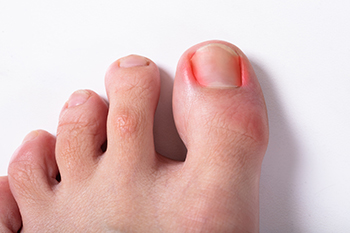 An ingrown toenail occurs when the toenail curls and grows into the skin surrounding the nail. Ingrown toenails usually become painful, red and swollen, and if left untreated, they can become infected. Common situations that cause ingrown toenails include wearing tight fitting shoes, improperly cutting the toenails, having sweaty feet, or sustaining a toe injury. If you are struggling with an ingrown toenail, soaking the feet in warm water for 15-20 minutes, 3-4 times a day is recommended. However, if the ingrown toenail persists, it is important to have it checked by a podiatrist in order to prevent an infection. In severe cases, a podiatrist may need to remove the nail via surgery.
An ingrown toenail occurs when the toenail curls and grows into the skin surrounding the nail. Ingrown toenails usually become painful, red and swollen, and if left untreated, they can become infected. Common situations that cause ingrown toenails include wearing tight fitting shoes, improperly cutting the toenails, having sweaty feet, or sustaining a toe injury. If you are struggling with an ingrown toenail, soaking the feet in warm water for 15-20 minutes, 3-4 times a day is recommended. However, if the ingrown toenail persists, it is important to have it checked by a podiatrist in order to prevent an infection. In severe cases, a podiatrist may need to remove the nail via surgery.
Ingrown toenails may initially present themselves as a minor discomfort, but they may progress into an infection in the skin without proper treatment. For more information about ingrown toenails, contact Dr. Thomas Madden of Advanced Foot Care Center. Our doctor can provide the care you need to keep you pain-free and on your feet.
Ingrown Toenails
Ingrown toenails are caused when the corner or side of a toenail grows into the soft flesh surrounding it. They often result in redness, swelling, pain, and in some cases, infection. This condition typically affects the big toe and may recur if it is not treated properly.
Causes
- Improper toenail trimming
- Genetics
- Improper shoe fitting
- Injury from pedicures or nail picking
- Abnormal gait
- Poor hygiene
You are more likely to develop an ingrown toenail if you are obese, have diabetes, arthritis, or have any fungal infection in your nails. Additionally, people who have foot or toe deformities are at a higher risk of developing an ingrown toenail.
Symptoms
Some symptoms of ingrown toenails are redness, swelling, and pain. In rare cases, there may be a yellowish drainage coming from the nail.
Treatment
Ignoring an ingrown toenail can have serious complications. Infections of the nail border can progress to a deeper soft-tissue infection, which can then turn into a bone infection. You should always speak with your podiatrist if you suspect you have an ingrown toenail, especially if you have diabetes or poor circulation.
If you have any questions, please feel free to contact our office located in Killeen, TX . We offer the newest diagnostic and treatment technologies for all your foot care needs.
Ingrown Toenails
Ingrown toenails (onychocryptosis) are a common foot ailment and it is very unpleasant to experience. The condition is caused by an increase in pressure from the ingrowth of the nail edge into the skin of the toe. Ingrown toenails commonly cause pain in those who experience them. In some cases, the skin surrounding the ingrown toenail may break which may lead bacteria to enter through and cause an infection. Common symptoms of this ailment include pain, redness, swelling, and warmth around the toe.
An imbalance between the size of the nail and the enlargement of the nail skin edge causes ingrown toenails. This condition is often caused by improperly trimming the toenails. If you are trying you cut your nails, you should always try to trim straight across instead of in a rounded shape. Ingrown toenails can also be an inherited condition and they may also be caused by improper shoe fitting.
Another common cause of the condition is wearing shoes that are either too small or too large. Other causes include poor foot hygiene, obesity, diabetes, arthritis, edema, and fungal infections. There are many risk factors that may make a person more likely to develop an ingrown toenail. Athletes who play “stop and start” sports such as tennis, soccer, and basketball are most likely to have ingrown toenails.
People who have diabetes, a compromised immune system, or poor circulation should immediately seek care from a podiatrist if they have an ingrown toenail. It is also recommended to seek professional assistance if at-home remedies are not successful within a week or if there is persistent pain.
Does My Achilles Tendon Injury Require Surgery?
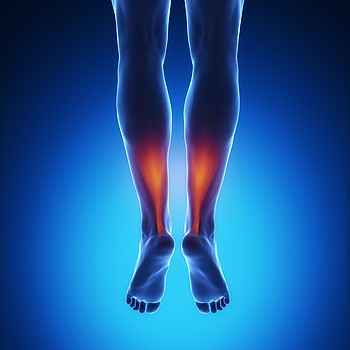 An Achilles tendon injury generally produces severe pain and discomfort. This tendon is located in the back of the leg and connects the calf muscles to the heels. An injury that is caused by sudden twisting and turning may result in an Achilles tendon rupture. A complete tear of this tendon will most likely require surgery, and it generally takes several weeks for a full recovery. Wearing a splint or boot may be required for a partial tear, as this is helpful in keeping the foot stable as the healing process occurs. A common symptom that is associated with an Achilles tendon injury is swelling. Mild relief can be found when the affected foot is elevated as often as possible, in addition to keeping it raised slightly above your head while sleeping. If you have experienced this type of injury, please consult with a podiatrist who can perform a proper diagnosis and offer the best treatment options for you.
An Achilles tendon injury generally produces severe pain and discomfort. This tendon is located in the back of the leg and connects the calf muscles to the heels. An injury that is caused by sudden twisting and turning may result in an Achilles tendon rupture. A complete tear of this tendon will most likely require surgery, and it generally takes several weeks for a full recovery. Wearing a splint or boot may be required for a partial tear, as this is helpful in keeping the foot stable as the healing process occurs. A common symptom that is associated with an Achilles tendon injury is swelling. Mild relief can be found when the affected foot is elevated as often as possible, in addition to keeping it raised slightly above your head while sleeping. If you have experienced this type of injury, please consult with a podiatrist who can perform a proper diagnosis and offer the best treatment options for you.
Achilles tendon injuries need immediate attention to avoid future complications. If you have any concerns, contact Dr. Thomas Madden of Advanced Foot Care Center. Our doctor can provide the care you need to keep you pain-free and on your feet.
What Is the Achilles Tendon?
The Achilles tendon is a tendon that connects the lower leg muscles and calf to the heel of the foot. It is the strongest tendon in the human body and is essential for making movement possible. Because this tendon is such an integral part of the body, any injuries to it can create immense difficulties and should immediately be presented to a doctor.
What Are the Symptoms of an Achilles Tendon Injury?
There are various types of injuries that can affect the Achilles tendon. The two most common injuries are Achilles tendinitis and ruptures of the tendon.
Achilles Tendinitis Symptoms
- Inflammation
- Dull to severe pain
- Increased blood flow to the tendon
- Thickening of the tendon
Rupture Symptoms
- Extreme pain and swelling in the foot
- Total immobility
Treatment and Prevention
Achilles tendon injuries are diagnosed by a thorough physical evaluation, which can include an MRI. Treatment involves rest, physical therapy, and in some cases, surgery. However, various preventative measures can be taken to avoid these injuries, such as:
- Thorough stretching of the tendon before and after exercise
- Strengthening exercises like calf raises, squats, leg curls, leg extensions, leg raises, lunges, and leg presses
If you have any questions please feel free to contact our office located in Killeen, TX . We offer the newest diagnostic tools and technology to treat your foot and ankle needs.
What are Achilles Tendon Injuries
The Achilles tendon is the strongest tendon in the human body. Its purpose is to connect the lower leg muscles and calf to the heel of the foot. This tendon is responsible for facilitating all types of movement, like walking and running. This tendon provides an enormous amount of mobility for the body. Any injuries inflicted to this tissue should be immediately brought up with a physician to prevent further damage.
The most common injuries that can trouble the Achilles tendon are tendon ruptures and Achilles tendinitis. Achilles tendinitis is the milder of the two injuries. It can be recognized by the following symptoms: inflammation, dull-to-severe pain, increased blood flow to the tendon, thickening of the tendon, and slower movement time. Tendinitis can be treated via several methods and is often diagnosed by an MRI.
An Achilles tendon rupture is trickier to heal, and is by far the most painful injury. It is caused by the tendon ripping or completely snapping. The results are immediate and absolutely devastating, and will render the patient immobile. If a rupture or tear occurs, operative and non-operative methods are available. Once the treatment begins, depending on the severity of the injury, recovery time for these types of issues can take up to a year.
Simple preventative measures can be taken as a means to avoid both injuries. Prior to any movement, taking a few minutes to stretch out the tendon is a great way to stimulate the tissue. Calf raises, squats, leg curls, leg extensions, leg raises, lunges, and leg presses are all suggested ways to help strengthen the lower legs and promote Achilles tendon health.
Many problems arise among athletes and people who overexert themselves while exercising. Problems can also happen among those who do not warm up properly before beginning an activity. Proper, comfortable shoes that fit correctly can also decrease tendon injuries. Some professionals also suggest that when exercising, you should make sure that the floor you are on is cushioned or has a mat. This will relieve pressure on the heels. A healthy diet will also increase tendon health.
It is very important to seek out a podiatrist if you believe you have an injury in the Achilles region. Further damage could result in severe complications that would make being mobile difficult, if not impossible.
What Is Hyperhidrosis of the Feet?
 The medical term for excessively sweaty feet is plantar hyperhidrosis. Sweating usually occurs as a cooling mechanism in response to physical activity or stress, but hyperhidrosis occurs when sweating isn't necessary. This sweating is excessive, which can understandably be uncomfortable and embarrassing. Common treatments for plantar hyperhidrosis can include antiperspirant prescriptions, botox injections, iontophoresis, and other medications. If you are struggling with excessively sweaty feet, it is recommended that you consult with a podiatrist for the treatment that is best for you.
The medical term for excessively sweaty feet is plantar hyperhidrosis. Sweating usually occurs as a cooling mechanism in response to physical activity or stress, but hyperhidrosis occurs when sweating isn't necessary. This sweating is excessive, which can understandably be uncomfortable and embarrassing. Common treatments for plantar hyperhidrosis can include antiperspirant prescriptions, botox injections, iontophoresis, and other medications. If you are struggling with excessively sweaty feet, it is recommended that you consult with a podiatrist for the treatment that is best for you.
If you are suffering from hyperhidrosis contact Dr. Thomas Madden of Advanced Foot Care Center. Our doctor can provide the care you need to attend to all of your foot and ankle needs.
Hyperhidrosis of the Feet
Hyperhidrosis is a rare disorder that can cause people to have excessive sweating of their feet. This can usually occur all on its own without rigorous activity involved. People who suffer from hyperhidrosis may also experience sweaty palms.
Although it is said that sweating is a healthy process meant to cool down the body temperature and to maintain a proper internal temperature, hyperhidrosis may prove to be a huge hindrance on a person’s everyday life.
Plantar hyperhidrosis is considered to be the main form of hyperhidrosis. Secondary hyperhidrosis can refer to sweating that occurs in areas other than the feet or hands and armpits. Often this may be a sign of it being related to another medical condition such as menopause, hyperthyroidism and even Parkinson’s disease.
In order to alleviate this condition, it is important to see your doctor so that they may prescribe the necessary medications so that you can begin to live a normal life again. If this is left untreated, it is said that it will persist throughout an individual’s life.
A last resort approach would be surgery, but it is best to speak with your doctor to find out what may be the best treatment for you.
If you have any questions please feel free to contact our office located in Killeen, TX . We offer the newest diagnostic and treatment technologies for all your foot and ankle needs.
The Ankle-Brachial Index for Patients With Foot Wounds
 Foot wounds can be caused by a variety of conditions. The ankle-brachial index, a simple and noninvasive vascular screening technique, can help your doctor determine the etiology of your wound. Chronic foot wounds are often caused by peripheral artery disease (PAD), a condition that leads to poor circulation in the lower extremities. Having PAD may cause foot wounds to be less likely to heal and risk of infection may be heightened as well. The ankle-brachial index is very useful in helping to diagnose PAD. During this screening, the doctor simply measures the blood pressure of your arm and ankle, and then compares the two numbers. The resulting ratio is used to determine the likelihood of you having PAD. Knowing this information is important, as it influences the doctor’s decisions on how to treat your foot wounds and any other foot and ankle conditions that you may experience. If you have foot wounds, speak with a podiatrist today.
Foot wounds can be caused by a variety of conditions. The ankle-brachial index, a simple and noninvasive vascular screening technique, can help your doctor determine the etiology of your wound. Chronic foot wounds are often caused by peripheral artery disease (PAD), a condition that leads to poor circulation in the lower extremities. Having PAD may cause foot wounds to be less likely to heal and risk of infection may be heightened as well. The ankle-brachial index is very useful in helping to diagnose PAD. During this screening, the doctor simply measures the blood pressure of your arm and ankle, and then compares the two numbers. The resulting ratio is used to determine the likelihood of you having PAD. Knowing this information is important, as it influences the doctor’s decisions on how to treat your foot wounds and any other foot and ankle conditions that you may experience. If you have foot wounds, speak with a podiatrist today.
Vascular testing plays an important part in diagnosing disease like peripheral artery disease. If you have symptoms of peripheral artery disease, or diabetes, consult with Dr. Thomas Madden from Advanced Foot Care Center. Our doctor will assess your condition and provide you with quality foot and ankle treatment.
What Is Vascular Testing?
Vascular testing checks for how well blood circulation is in the veins and arteries. This is most often done to determine and treat a patient for peripheral artery disease (PAD), stroke, and aneurysms. Podiatrists utilize vascular testing when a patient has symptoms of PAD or if they believe they might. If a patient has diabetes, a podiatrist may determine a vascular test to be prudent to check for poor blood circulation.
How Is it Conducted?
Most forms of vascular testing are non-invasive. Podiatrists will first conduct a visual inspection for any wounds, discoloration, and any abnormal signs prior to a vascular test.
The most common tests include:
- Ankle-Brachial Index (ABI) examination
- Doppler examination
- Pedal pulses
These tests are safe, painless, and easy to do. Once finished, the podiatrist can then provide a diagnosis and the best course for treatment.
If you have any questions, please feel free to contact our office located in Killeen, TX . We offer the newest diagnostic and treatment technologies for all your foot care needs.
Read more about Vascular Testing in Podiatry
What Method Is Used to Correct Clubfoot?
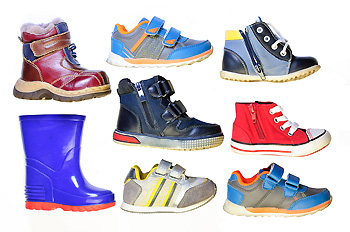 There are children that are born with the foot condition that is known as clubfoot. It is considered to be a birth defect, and an early diagnosis and treatment may be effective in correcting it. The noticeable signs of clubfoot consist of the feet facing downward and inward, and the sole of the foot may face backward. It is beneficial to begin treatment within a few weeks after birth. One method that may be used for correction is the Ponseti method. This is implemented by moving the feet into a normal position, followed by putting them in a cast. This process is repeated every week for approximately two months. Many children who are affected by clubfoot need to temporarily wear boots that are attached with a bar. This may be helpful in preventing clubfoot from reoccurring. If you notice your child has any of the above symptoms, it is strongly suggested that you consult with a podiatrist as quickly as possible who can prescribe the correct treatment.
There are children that are born with the foot condition that is known as clubfoot. It is considered to be a birth defect, and an early diagnosis and treatment may be effective in correcting it. The noticeable signs of clubfoot consist of the feet facing downward and inward, and the sole of the foot may face backward. It is beneficial to begin treatment within a few weeks after birth. One method that may be used for correction is the Ponseti method. This is implemented by moving the feet into a normal position, followed by putting them in a cast. This process is repeated every week for approximately two months. Many children who are affected by clubfoot need to temporarily wear boots that are attached with a bar. This may be helpful in preventing clubfoot from reoccurring. If you notice your child has any of the above symptoms, it is strongly suggested that you consult with a podiatrist as quickly as possible who can prescribe the correct treatment.
The health of a child’s feet is vital to their overall well-being. If you have any questions regarding foot health, contact Dr. Thomas Madden of Advanced Foot Care Center. Our doctor can provide the care you need to keep you pain-free and on your feet.
Tips for Keeping Children's Feet Healthy
- Make sure their shoes fit properly
- Look for any signs of in-toeing or out-toeing
- Check to see if they have Clubfoot (condition that affects your child’s foot and ankle, twisting the heel and toes inward) which is one of the most common nonmajor birth defects.
- Lightly cover your baby’s feet (Tight covers may keep your baby from moving their feet freely, and could prevent normal development)
- Allow your toddler to go shoeless (Shoes can be restricting for a young child’s foot)
- Cut toenails straight across to avoid ingrown toenails
- Keep your child’s foot clean and dry
- Cover cuts and scrapes. Wash any scratches with soap and water and cover them with a bandage until they’ve healed.
If you have any questions, please feel free to contact our office located in Killeen, TX . We offer the newest diagnostic and treatment technologies for all your foot care needs.
Read more about How to Care for Your Child's FeetCauses and Symptoms of Tarsal Tunnel Syndrome
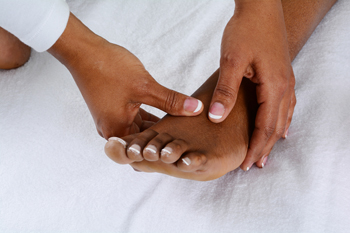 Tarsal tunnel syndrome is a condition caused by the compression of the tibial nerve in your ankle. The tibial nerve can become compressed as the result of trauma, such as a fall, or from overuse. Tarsal tunnel syndrome might also arise as a complication following an ankle sprain or other lower limb injury, or following surgery. People who are diagnosed with diabetes or rheumatoid arthritis are at an increased risk of developing tarsal tunnel syndrome. The typical symptoms of this condition are a tingling, pins and needles sensation along the inner side of the ankle or foot, pain during extended periods of walking or standing, a burning sensation in the foot at night, and weakness in the muscles that bend the toes. If you are experiencing any symptoms of tarsal tunnel syndrome, it is suggested that you consult with a podiatrist.
Tarsal tunnel syndrome is a condition caused by the compression of the tibial nerve in your ankle. The tibial nerve can become compressed as the result of trauma, such as a fall, or from overuse. Tarsal tunnel syndrome might also arise as a complication following an ankle sprain or other lower limb injury, or following surgery. People who are diagnosed with diabetes or rheumatoid arthritis are at an increased risk of developing tarsal tunnel syndrome. The typical symptoms of this condition are a tingling, pins and needles sensation along the inner side of the ankle or foot, pain during extended periods of walking or standing, a burning sensation in the foot at night, and weakness in the muscles that bend the toes. If you are experiencing any symptoms of tarsal tunnel syndrome, it is suggested that you consult with a podiatrist.
Tarsal tunnel syndrome can be very uncomfortable to live with. If you are experiencing tarsal tunnel syndrome, contact Dr. Thomas Madden of Advanced Foot Care Center. Our doctor can provide the care you need to keep you pain-free and on your feet.
Tarsal Tunnel Syndrome
Tarsal tunnel syndrome, which can also be called tibial nerve dysfunction, is an uncommon condition of misfiring peripheral nerves in the foot. The tibial nerve is the peripheral nerve in the leg responsible for sensation and movement of the foot and calf muscles. In tarsal tunnel syndrome, the tibial nerve is damaged, causing problems with movement and feeling in the foot of the affected leg.
Common Cause of Tarsal Tunnel Syndrome
- Involves pressure or an injury, direct pressure on the tibial nerve for an extended period of time, sometimes caused by other body structures close by or near the knee.
- Diseases that damage nerves, including diabetes, may cause tarsal tunnel syndrome.
- At times, tarsal tunnel syndrome can appear without an obvious cause in some cases.
The Effects of Tarsal Tunnel Syndrome
- Different sensations, an afflicted person may experience pain, tingling, burning or other unusual sensations in the foot of the affected leg.
- The foot muscles, toes and ankle become weaker, and curling your toes or flexing your foot can become difficult.
- If condition worsens, infections and ulcers may develop on the foot that is experiencing the syndrome.
A physical exam of the leg can help identify the presence of tarsal tunnel syndrome. Medical tests, such as a nerve biopsy, are also used to diagnose the condition. Patients may receive physical therapy and prescriptive medication. In extreme cases, some may require surgery.
If you have any questions please feel free to contact our office located in Killeen, TX . We offer the newest diagnostic and treatment technologies for all your foot and ankle needs.
Shoes and Blisters on the Feet
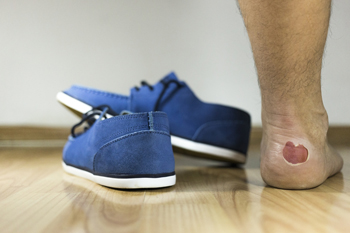 Friction is the most common cause of blisters on the feet. They can happen as a result of wearing shoes that do not fit correctly or from medical conditions that include psoriasis and eczema. It is defined as a small pocket of fluid that forms over the damaged area. This helps to protect the affected area as the healing process occurs. It is the body’s natural healing technique that will gradually drain once new skin has formed. It may be beneficial to wear a protective covering over the blister until it drains naturally, as this may help to prevent it from becoming infected. If you have a blister on your foot, please consult with a podiatrist who can provide a proper examination and offer more extensive treatment advice.
Friction is the most common cause of blisters on the feet. They can happen as a result of wearing shoes that do not fit correctly or from medical conditions that include psoriasis and eczema. It is defined as a small pocket of fluid that forms over the damaged area. This helps to protect the affected area as the healing process occurs. It is the body’s natural healing technique that will gradually drain once new skin has formed. It may be beneficial to wear a protective covering over the blister until it drains naturally, as this may help to prevent it from becoming infected. If you have a blister on your foot, please consult with a podiatrist who can provide a proper examination and offer more extensive treatment advice.
Blisters are prone to making everyday activities extremely uncomfortable. If your feet are hurting, contact Dr. Thomas Madden of Advanced Foot Care Center. Our doctor can provide the care you need to keep you pain-free and on your feet.
Foot Blisters
Foot blisters develop as a result of constantly wearing tight or ill-fitting footwear. This happens due to the constant rubbing from the shoe, which can often lead to pain.
What Are Foot Blisters?
A foot blister is a small fluid-filled pocket that forms on the upper-most layer of the skin. Blisters are filled with clear fluid and can lead to blood drainage or pus if the area becomes infected.
How Do Blisters Form?
Blisters on the feet are often the result of constant friction of skin and material, usually by shoe rubbing. Walking in sandals, boots, or shoes that don’t fit properly for long periods of time can result in a blister. Having consistent foot moisture and humidity can easily lead to blister formation.
Prevention & Treatment
It is important to properly care for the affected area in order to prevent infection and ease the pain. Do not lance the blister and use a Band-Aid to provide pain relief. Also, be sure to keep your feet dry and wear proper fitting shoes. If you see blood or pus in a blister, seek assistance from a podiatrist.
If you have any questions, please feel free to contact our office located in Killeen, TX . We offer the newest diagnostic and treatment technologies for all your foot care needs.



